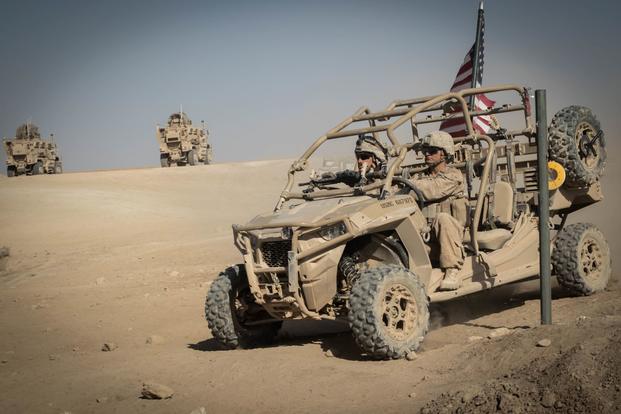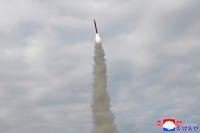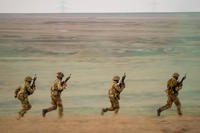The Marine Corps is adding a slew of upgrades to its off-the-shelf lightweight tactical vehicle, which leaders say grunts are pushing to the limits.
Nearly 250 Marine Utility Task Vehicles are getting new floorboards, canopies, tires and other features that will improve their functioning and safety. The additions are the result of input from Marines, who are using the dune buggy-like vehicles in some extreme conditions.
"UTVs are employed where Marines conduct missions, which can include extended exposure to extreme elements such as high heat, freezing cold, saltwater/salt-spray and varying fuel quality," Barb Hamby, a spokeswoman for PEO Land Systems, said.
Marines have been driving the all-terrain vehicles, made by Polaris, since 2017. The four-person vehicles fit easily into a MV-22B Osprey aircraft or CH-53E Super Stallion helicopter, and they allow small Marine teams to zip out to hard-to-reach areas quickly.
Since the service purchased them commercially, the vehicles don't have everything Marines want. But in 2020, they'll see some significant changes to the vehicles.
Related: Marines Still Using Their Polaris ATVs After Fires in Civilian Versions Prompt Recalls
Among them: new high-clearance control arms, part of the vehicle's suspension system that attaches to the tires. Since Marines drive the vehicles in all types of terrain, they were hitting rocks and other debris that was bending the arms -- and that can sideline a vehicle.
SuperATV will supply the new control arms, Hamby said.
Harsh terrain was also wreaking havoc on some of the vehicles' floorboards. Marines using the UTV in Australia, for example, had sticks and branches popping through the vehicles' plastic floorboard, according to a Marine Corps news release.
That was a safety hazard, officials said. Thunderhawk Performance, Inc., an Ohio-based company that makes MRZR parts, produced a lightweight aluminum floorboard that will be added to the Marine Corps' vehicles, Hamby said.
Marines were also having issues with the vehicle's clutch. They're getting a better clutch kit from Polaris.
That company will also provide a new "environmental protection cover," Hamby said, which can shield Marines from rain or the hot sun.
The UTVs will also be outfitted with new tires from BF Goodrich, and they'll use new run-flat inserts from Tireballs.
Jason Engstrom, lead systems engineer for the Marine Corps' UTV, describes the inserts in a news release this way: "Inside each tire are 16 inflatable cells, so if any one cell pops from running over a spike or nail, you'd still have 15 other cells full of air to continue driving on."
Lastly, Hamby said, each vehicle will get a kit with turn signals, a horn and rearview mirror built by SAIC.
In April, a Marine was killed and two others injured in an MRZR accident in California. That accident, however, did not play a role in the Marine Corps' decision to upgrade the UTVs, Hamby said.
"When any accident occurs, the Program Office participates in the investigation and implements recommended corrective actions to improve the safety of the Marine operators," she added.
-- Gina Harkins can be reached at gina.harkins@military.com. Follow her on Twitter @ginaaharkins.
Read More: Pentagon Announces Plans to Monitor Foreign Trainees' Social Media Accounts















